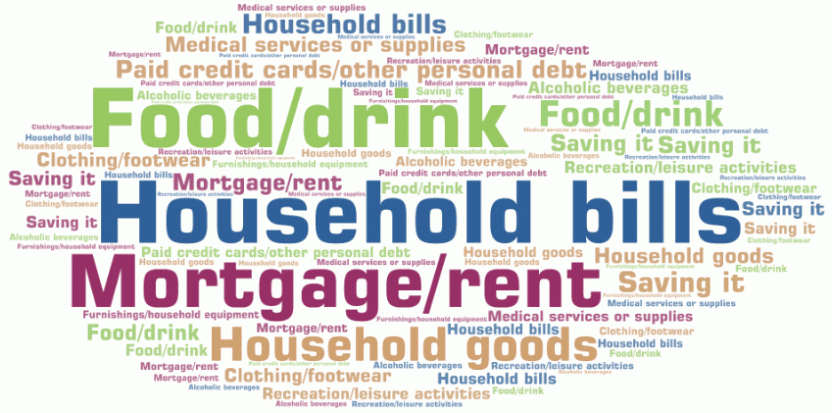About this issue
This publication presents results from the monthly Household Impacts of COVID-19 Survey, a longitudinal survey which collects information from around 1,500 people. This survey is similar in design to the series of eight fortnightly surveys conducted between 1 April to 30 July 2020. The August 2020 survey was collected between 7 August and 17 August 2020 via online forms and telephone interviews.
The August 2020 survey collected information on:
- emotional and mental wellbeing
- precautions taken due to COVID-19
- household financial stress
- use of stimulus payments
- returning to activities as COVID-19 restrictions ease
- job status.
The scope of the survey was persons aged 18 years and over in private dwellings across Australia (excluding very remote areas).
About this collection
This survey is designed to provide a quick snapshot of the changing social and economic situation for Australian households with particular focus on how they are faring in response to the COVID-19 pandemic. Each cycle will collect information on different topics.
This survey introduces a new panel of respondents but follows on from the fortnightly survey of the same name, which conducted eight cycles from 12 April to 30 July 2020. The results for the most recent fortnightly survey (and links to past releases) can be found in the Past and Future Releases menu of this publication.
In August 2020, there were an additional two detailed releases of results collected as part of the Multipurpose Household Survey (MPHS) during May and June 2020. The most recent results from the detailed MPHS Household Impacts of COVID-19 supplement can be found here: Household Impacts of COVID-19 Survey, Detailed Release, June 2020.
Some topics have been repeated in both the fortnightly and monthly survey. Where relevant, comparisons are made based on the weighted representative data for both surveys.
From 7 August to 17 August, when this survey was conducted, Victoria was identifying an average of 350 cases daily, with a minimum of 278 and maximum of 466 new cases in a single day. New South Wales recorded average daily cases of 11 with a minimum of 5 and maximum of 22 in a single day. Other states and territories were continuing to have low numbers of COVID-19 cases (no higher than two cases but often days with no new cases).
Since the beginning of the pandemic, initiatives in place to help reduce the spread of COVID-19 and support the economy included:
- international travel restrictions
- an economic stimulus package (12 March)
- border control measures for some states and territories
- shutting down of non-essential services and a second economic stimulus package (22 March)
- a Coronavirus Supplement announced on 22 March and paid fortnightly from 27 April to eligible income support recipients along with their usual payments
- a safety net package of $1.1 billion to expand mental health and Telehealth services, increase domestic violence services and provide more emergency food relief (29 March)
- social distancing rules and additional shutdown restrictions (20–30 March)
- a JobKeeper Payment passed in legislation on 15 April and paid to employers to keep more Australians in jobs and support businesses affected by the COVID-19 restrictions
- easing of restrictions on elective surgery gradually from 28 April
- National Cabinet agreeing on a three-stage plan to ease restrictions (8 May)
- easing of restrictions in many states and territories from mid-May, with most between stage two and three at the time of the survey (with the exception of Victoria as described below).
The second wave of COVID-19 emerged in Victoria from mid-June 2020 leading to stronger restrictions and support within the state including:
- stage 4 restrictions reinstated across metropolitan Melbourne, and stage 3 restrictions applied throughout regional Victoria
- mandatory face coverings in public
- a return to remote learning for schools with onsite access to schools and childcare restricted to essential workers with permits
- closing onsite operation of retail, administration and some manufacturing businesses put in place for 6 weeks (with the exception of essential businesses)
- a Pandemic Leave Disaster Payment introduced for people who are required to take 14 days of leave to self-isolate or quarantine at home or care for someone with COVID-19.
Due to the small sample size and associated high sample errors for this survey, it is not possible to meaningfully compare responses across all states and territories. Where possible, analysis has been conducted comparing Victorian estimates with those for the rest of Australia.
Proportions marked with an asterisk (*) have a Margin of Error (MoE) >10 percentage points which should be considered when using this information. For more information about MoE refer to the publication explanatory notes.

